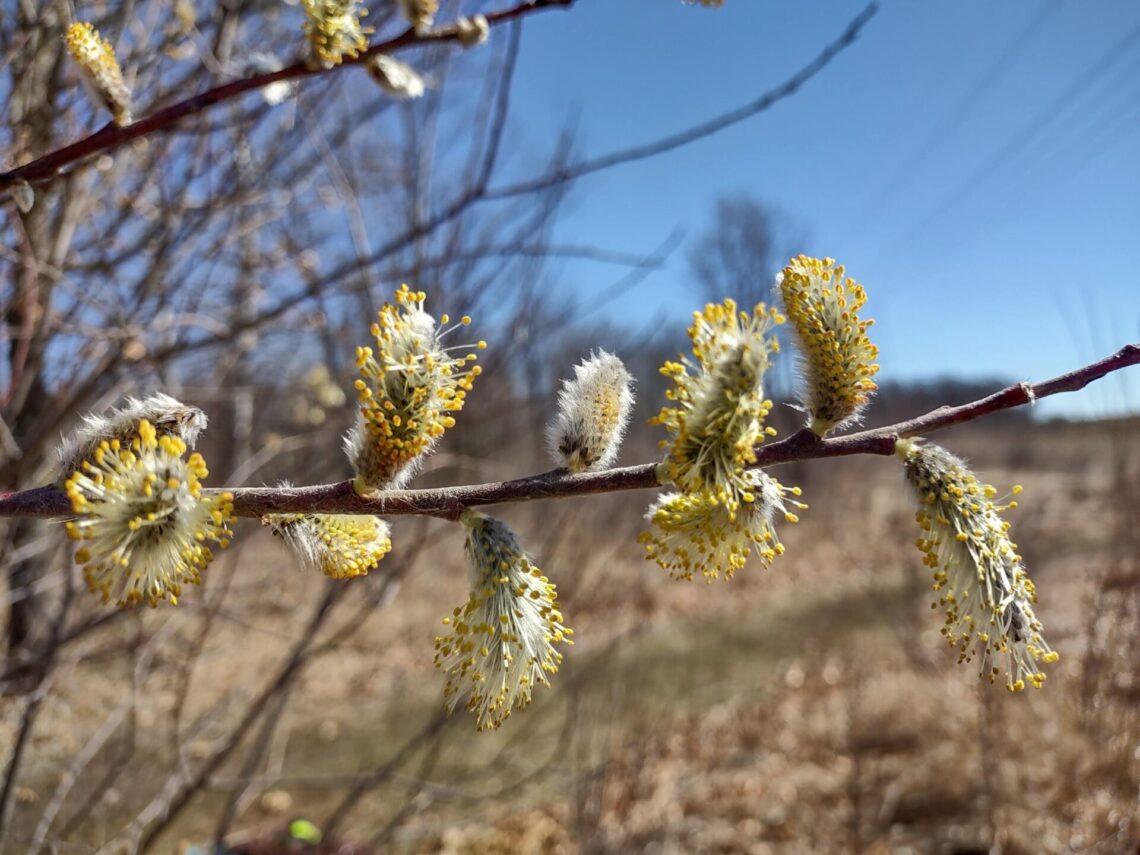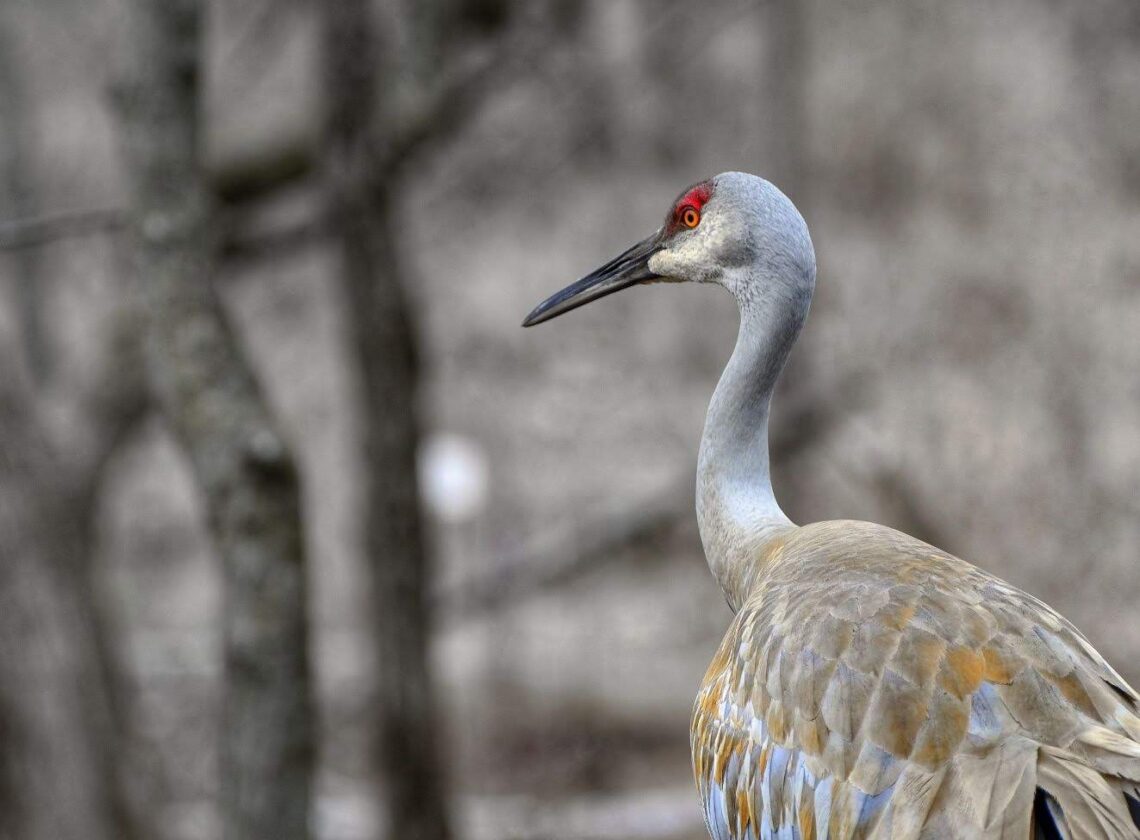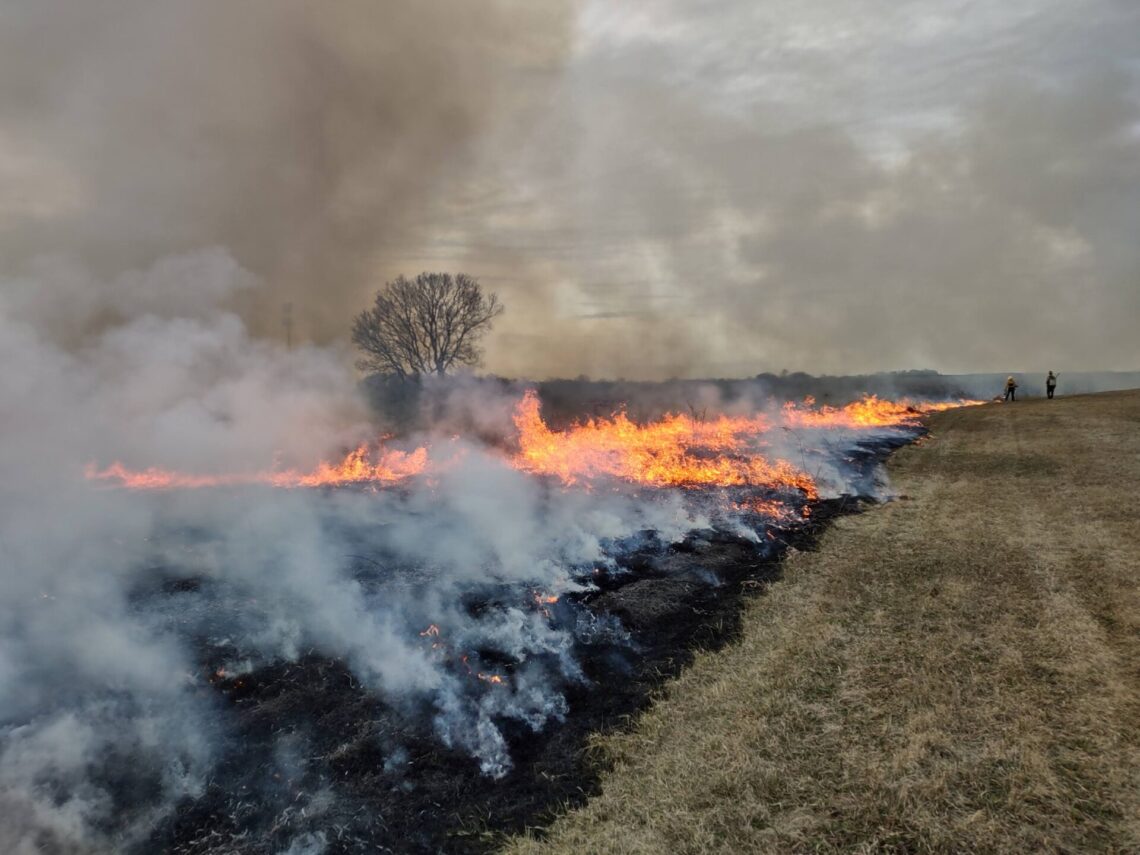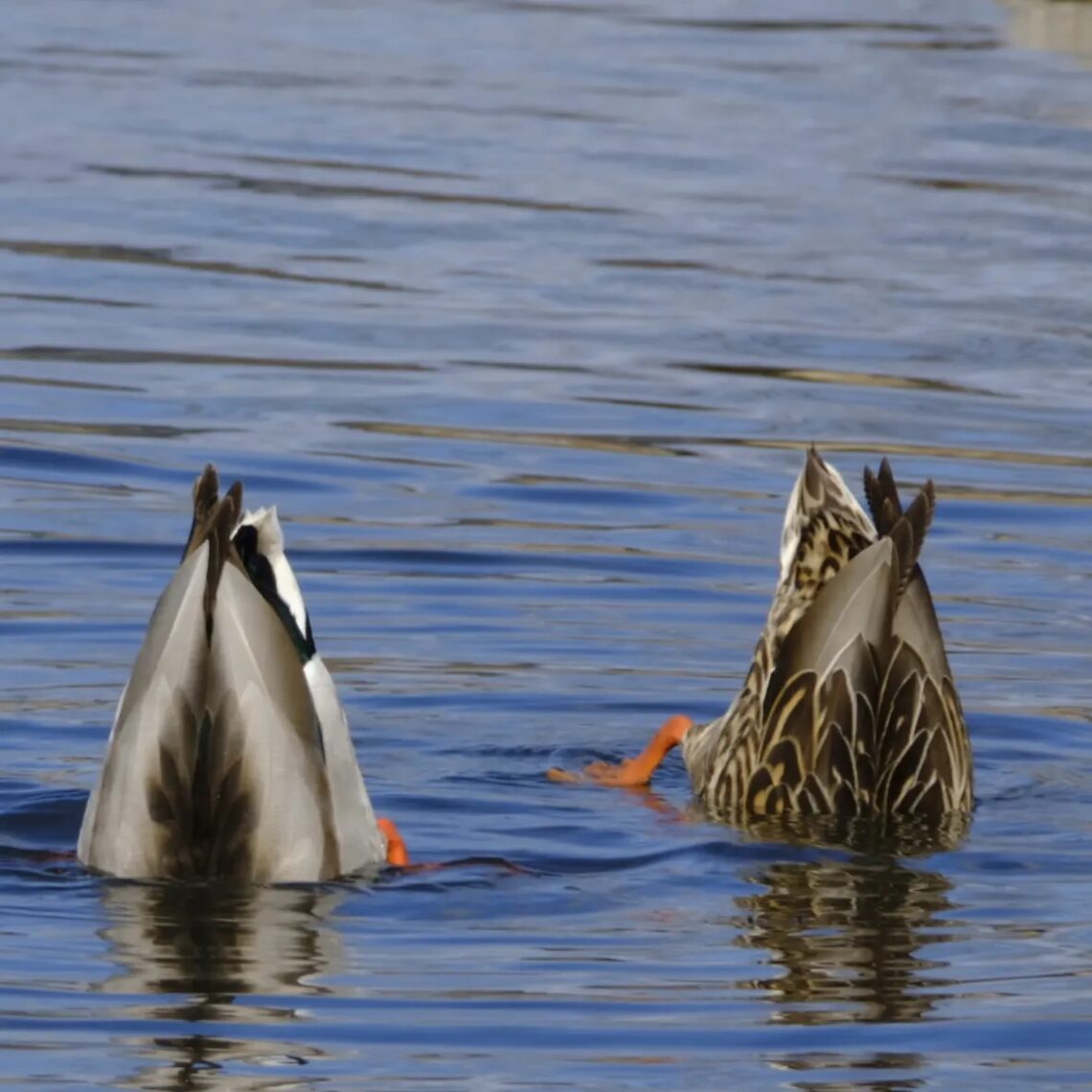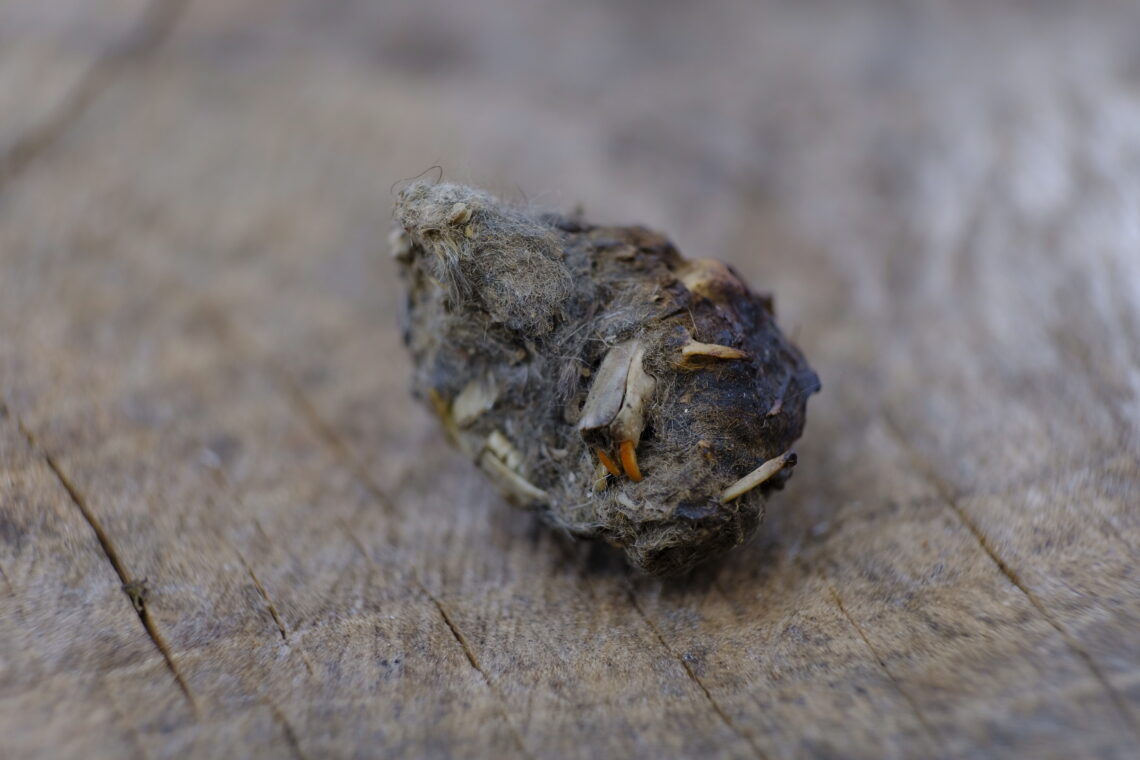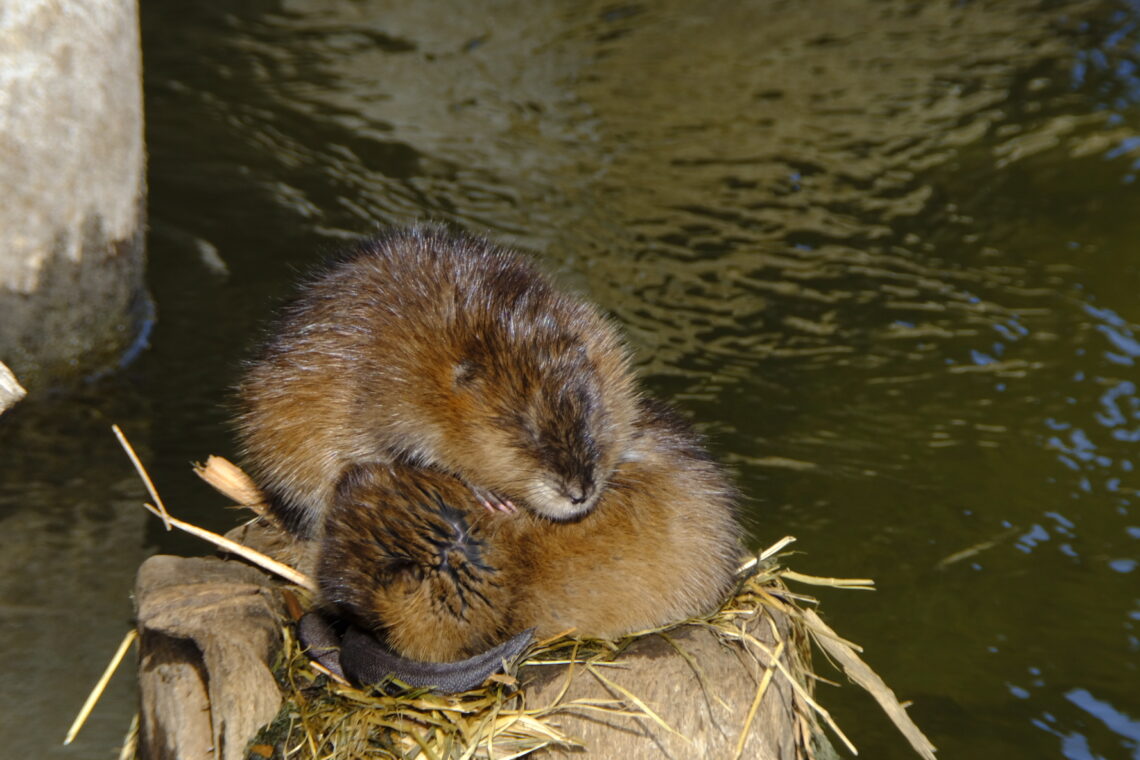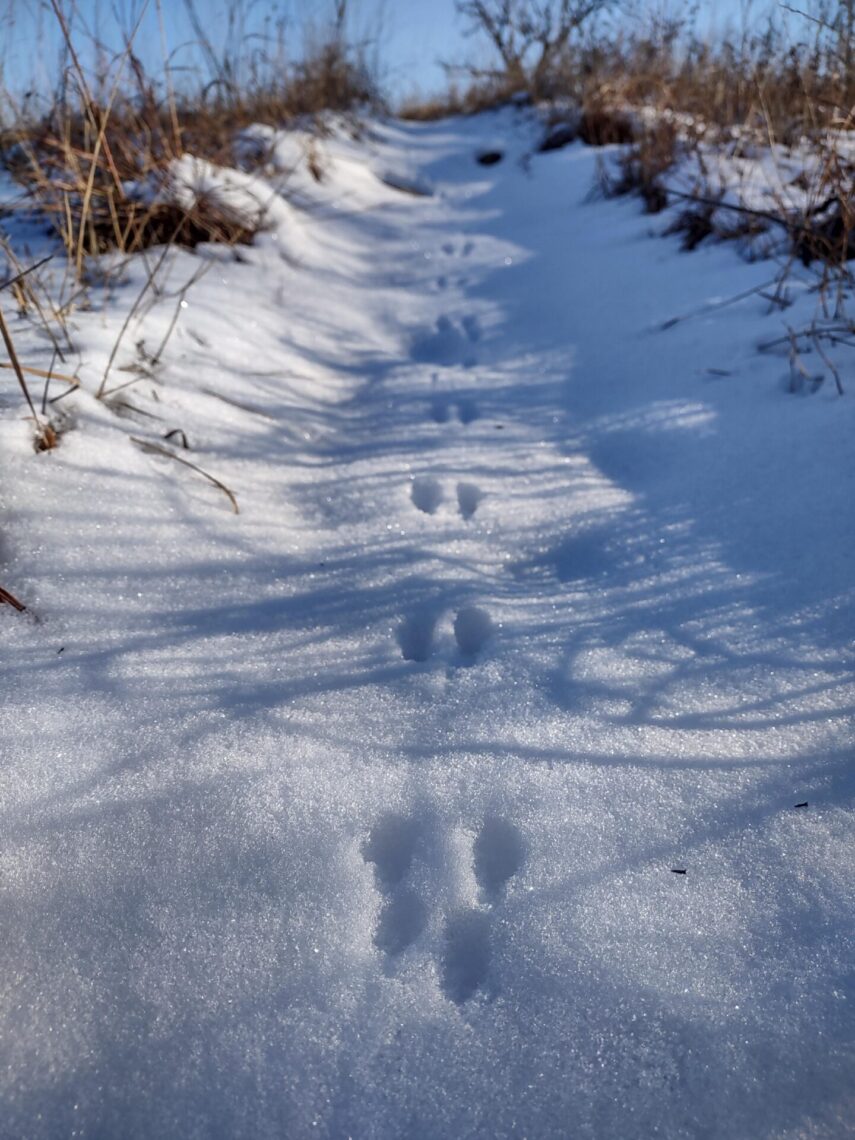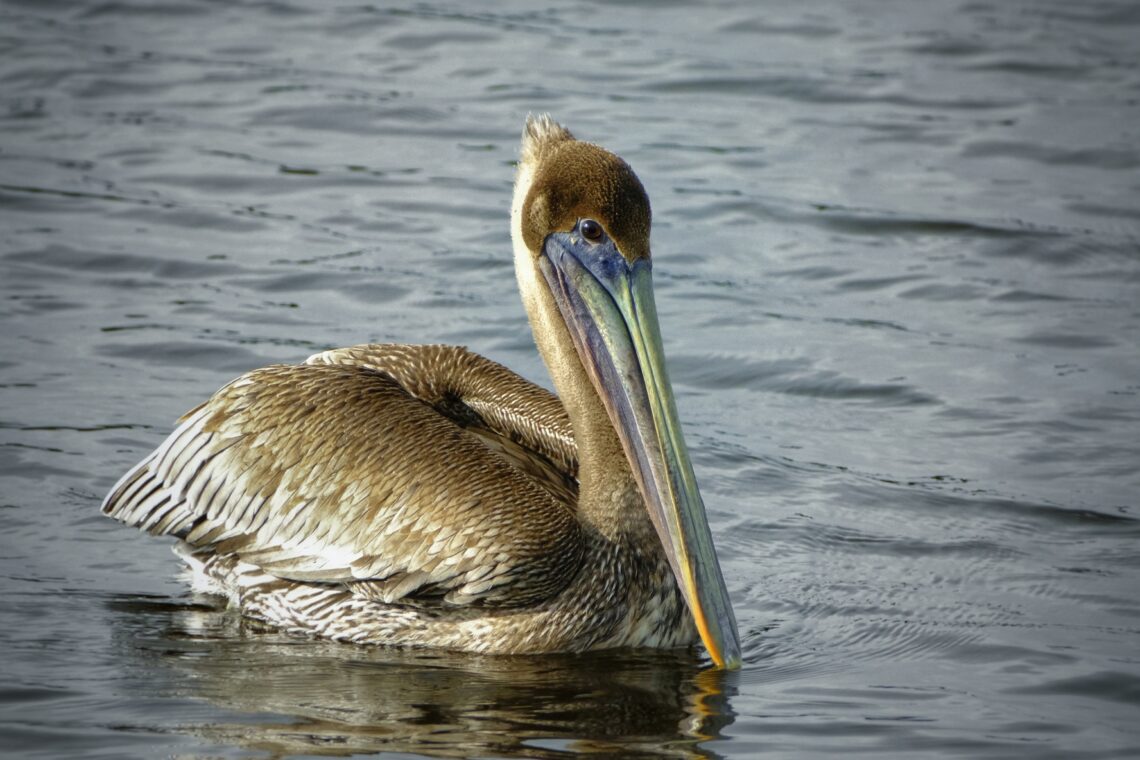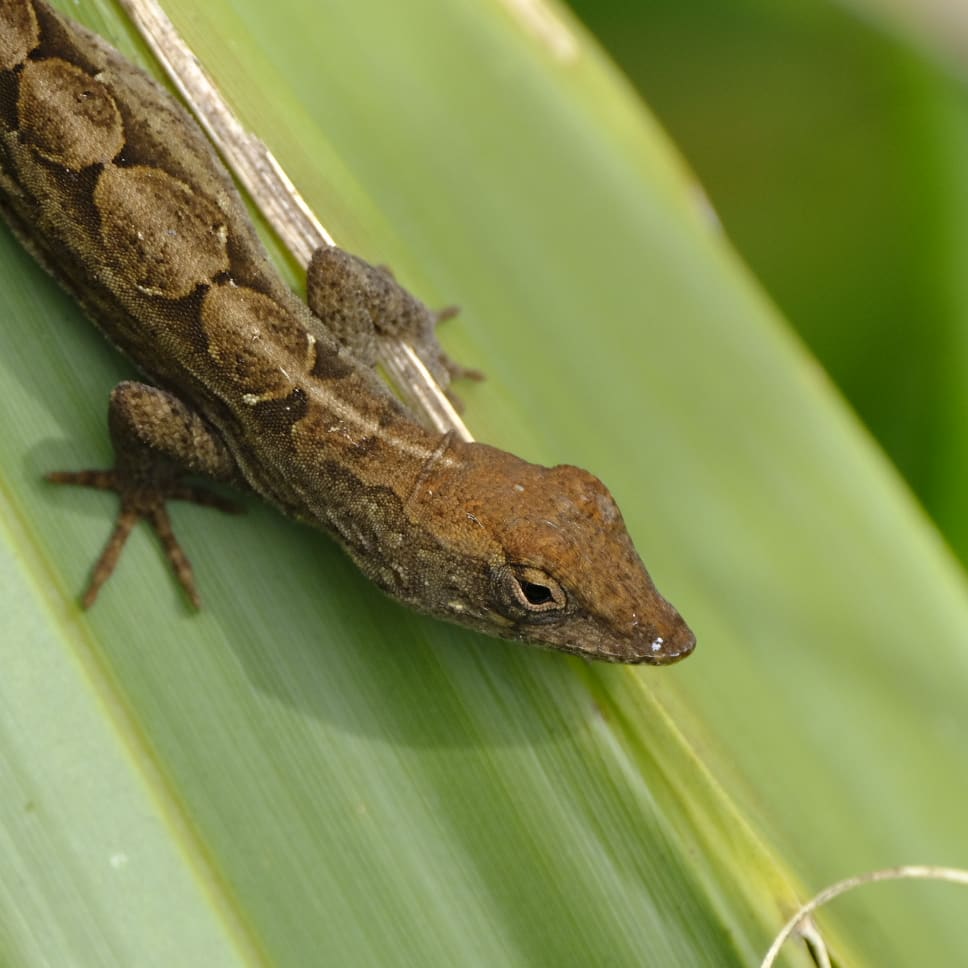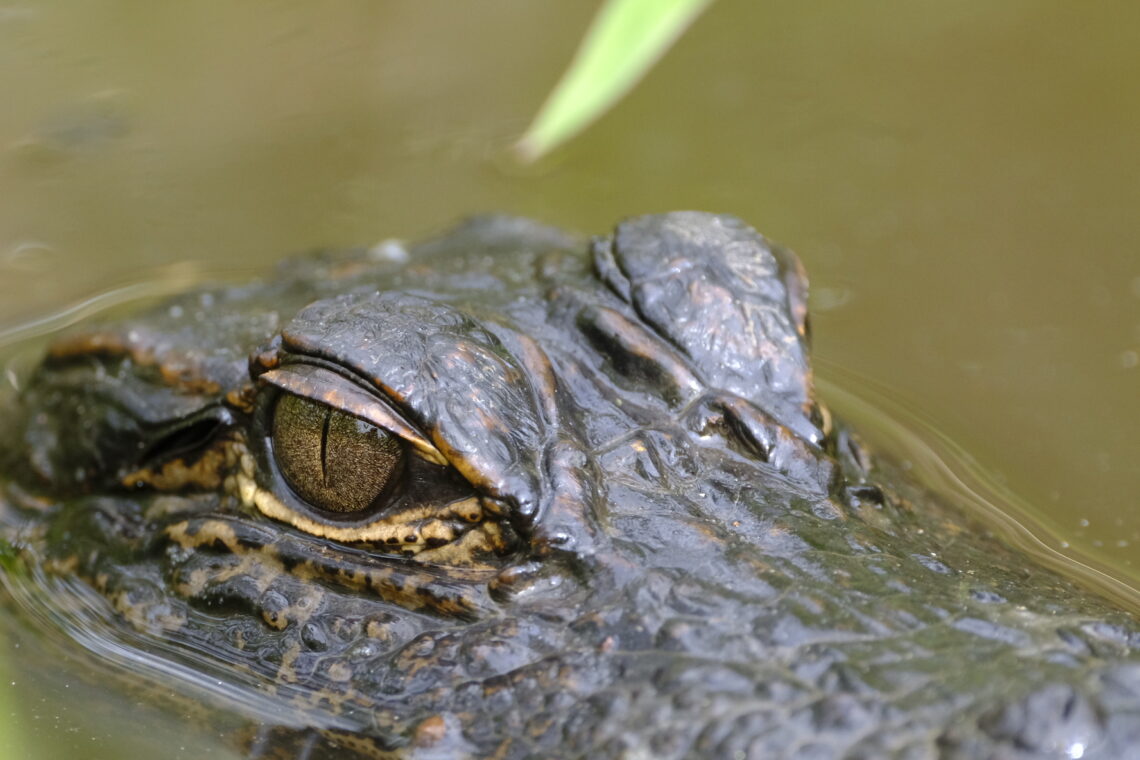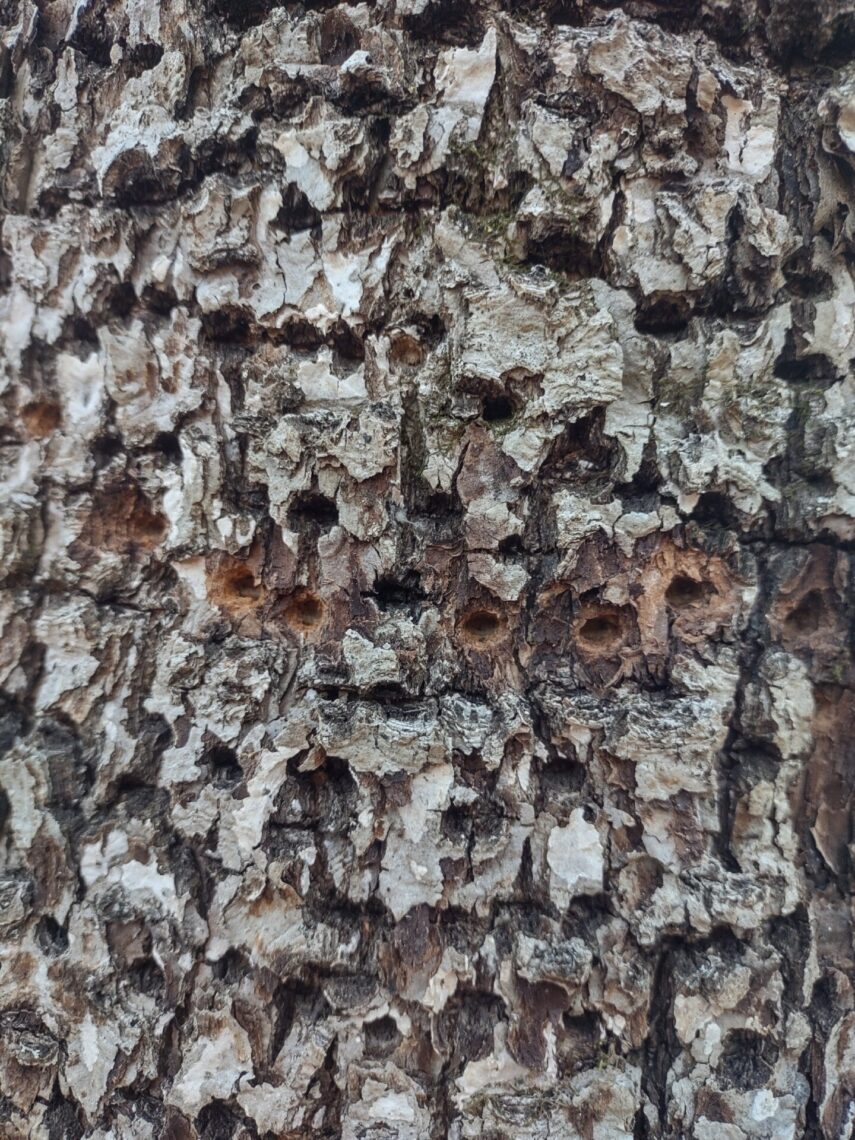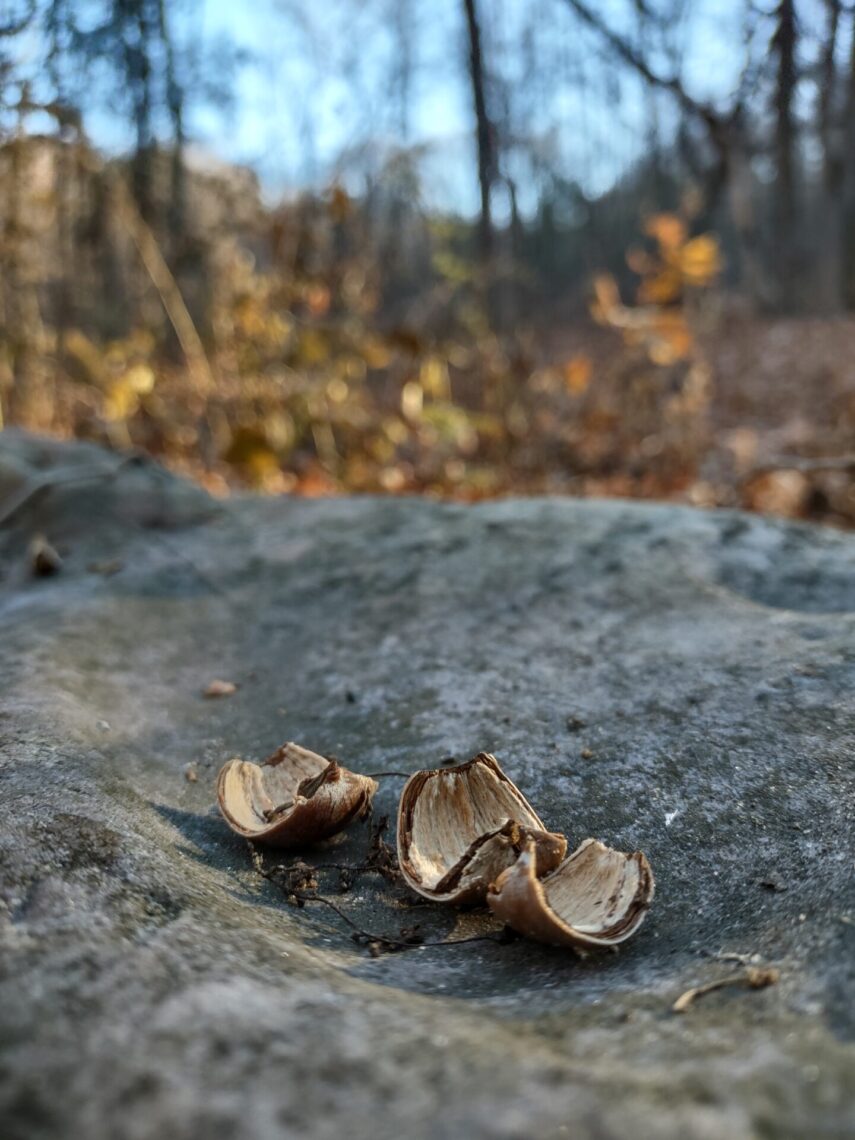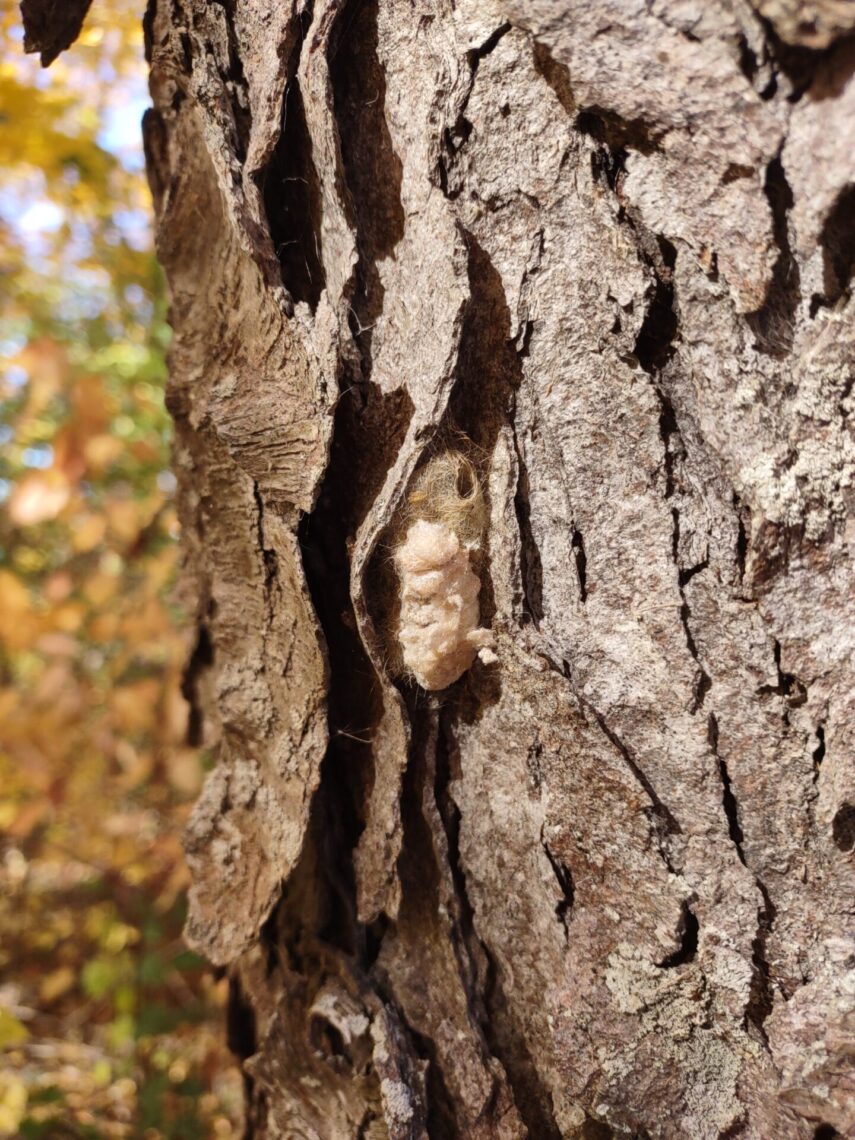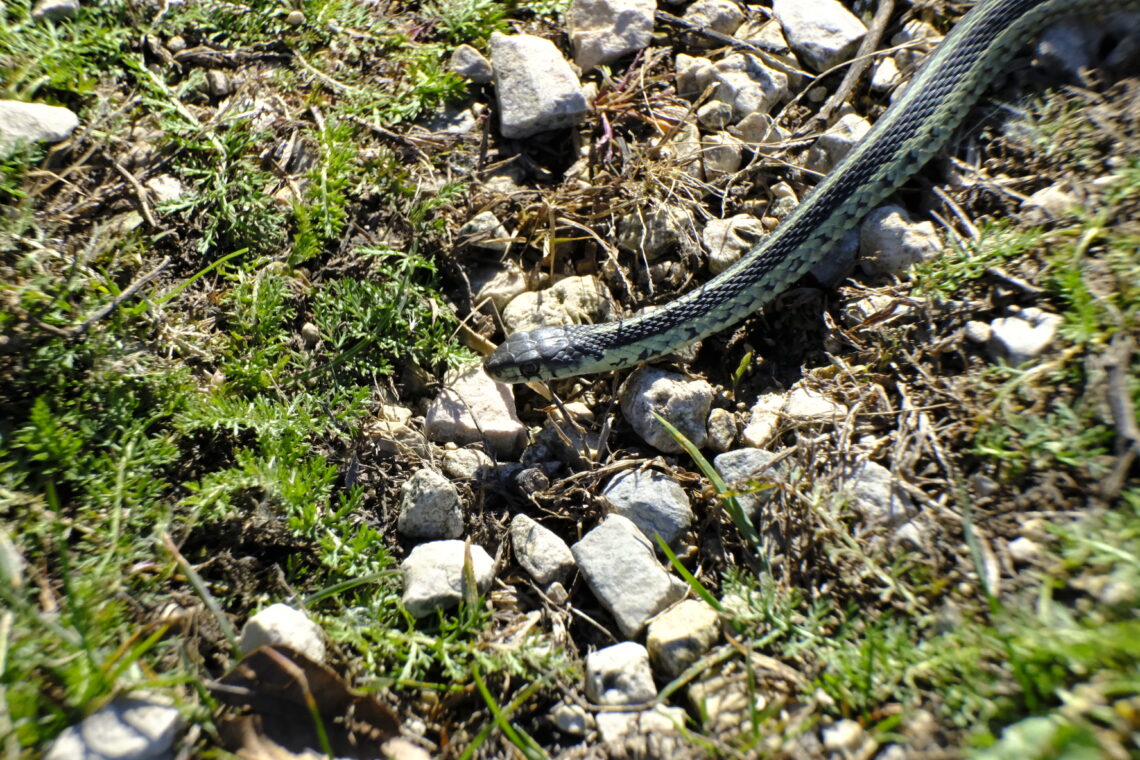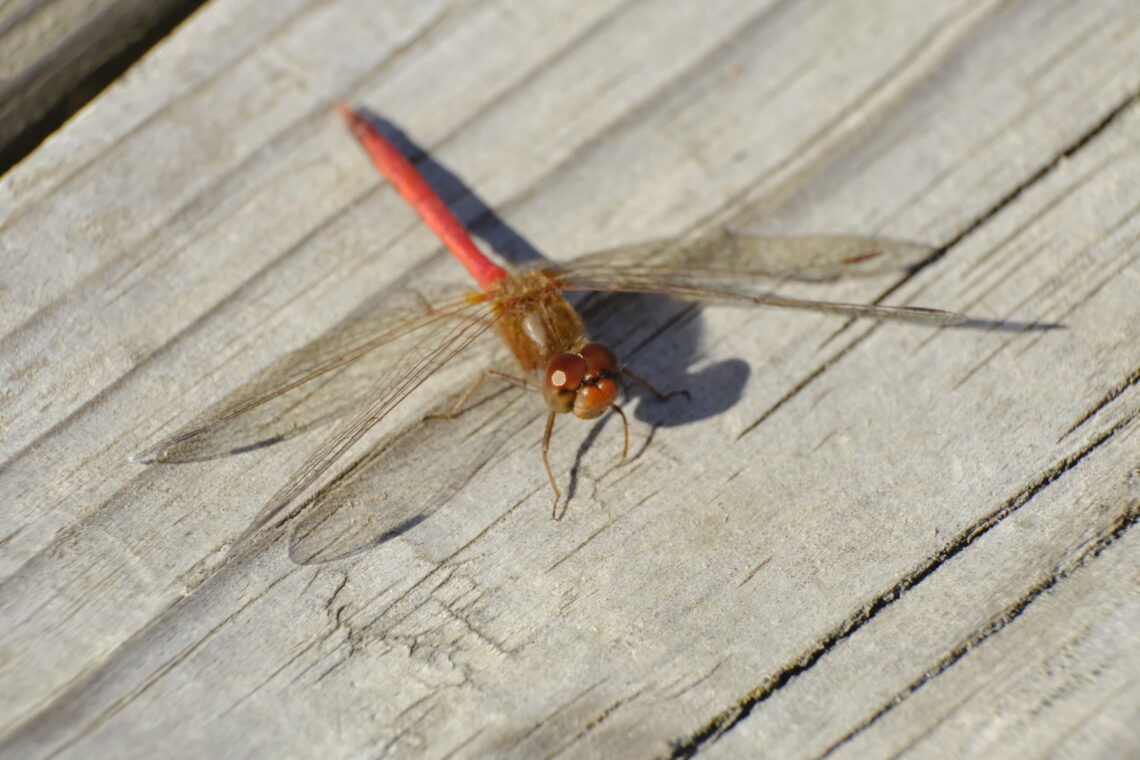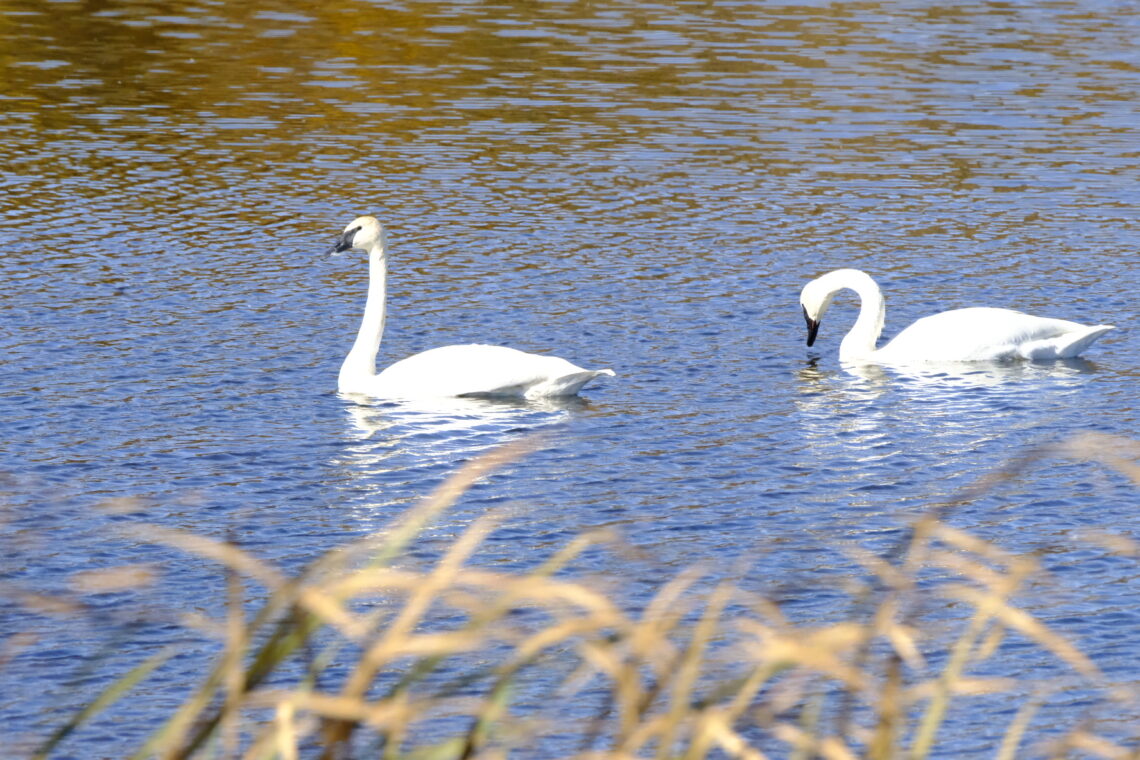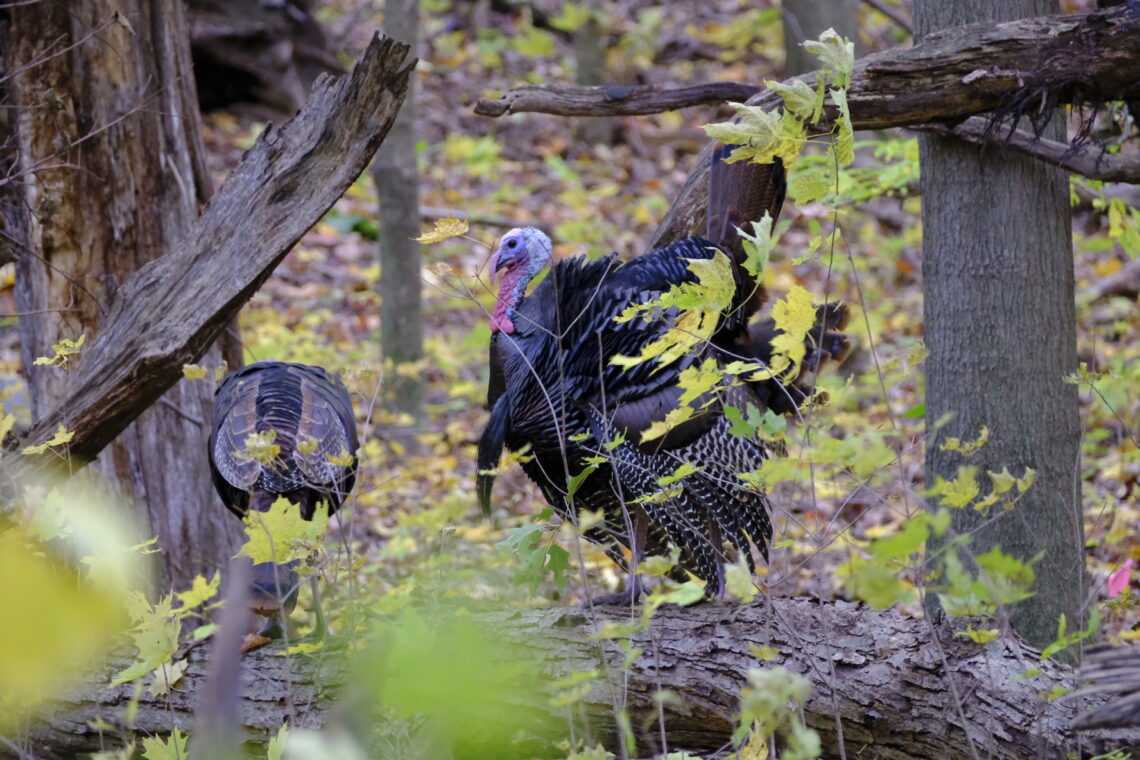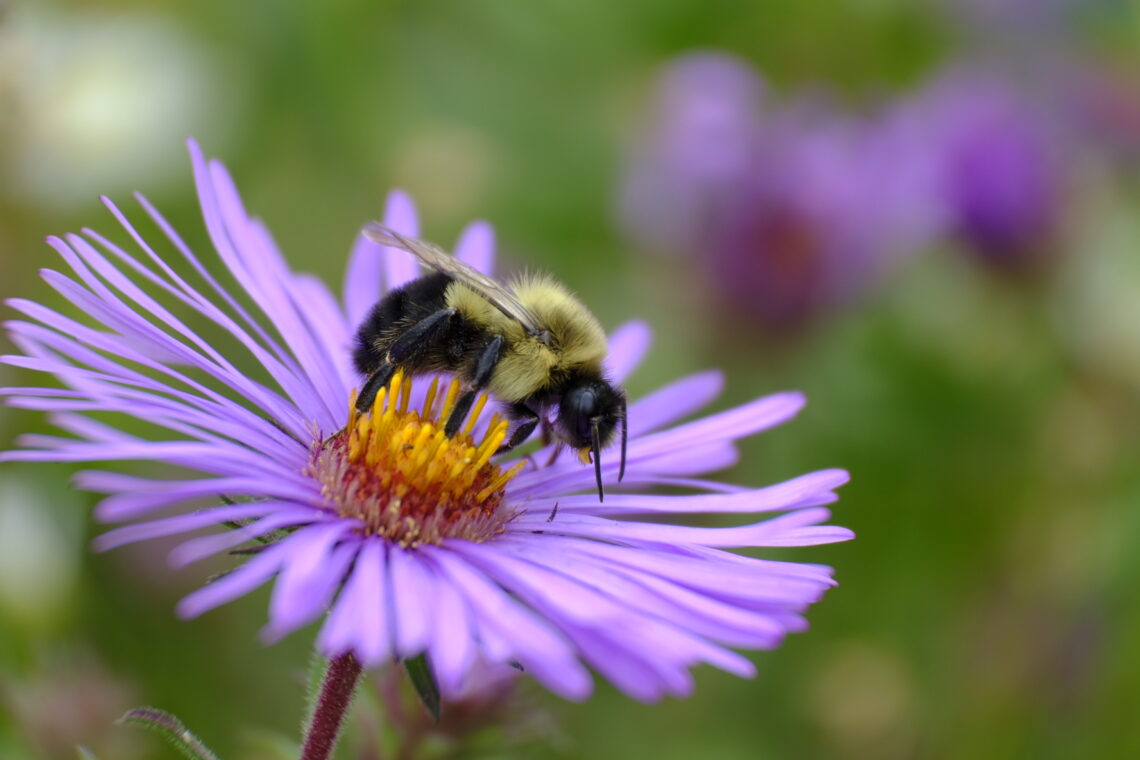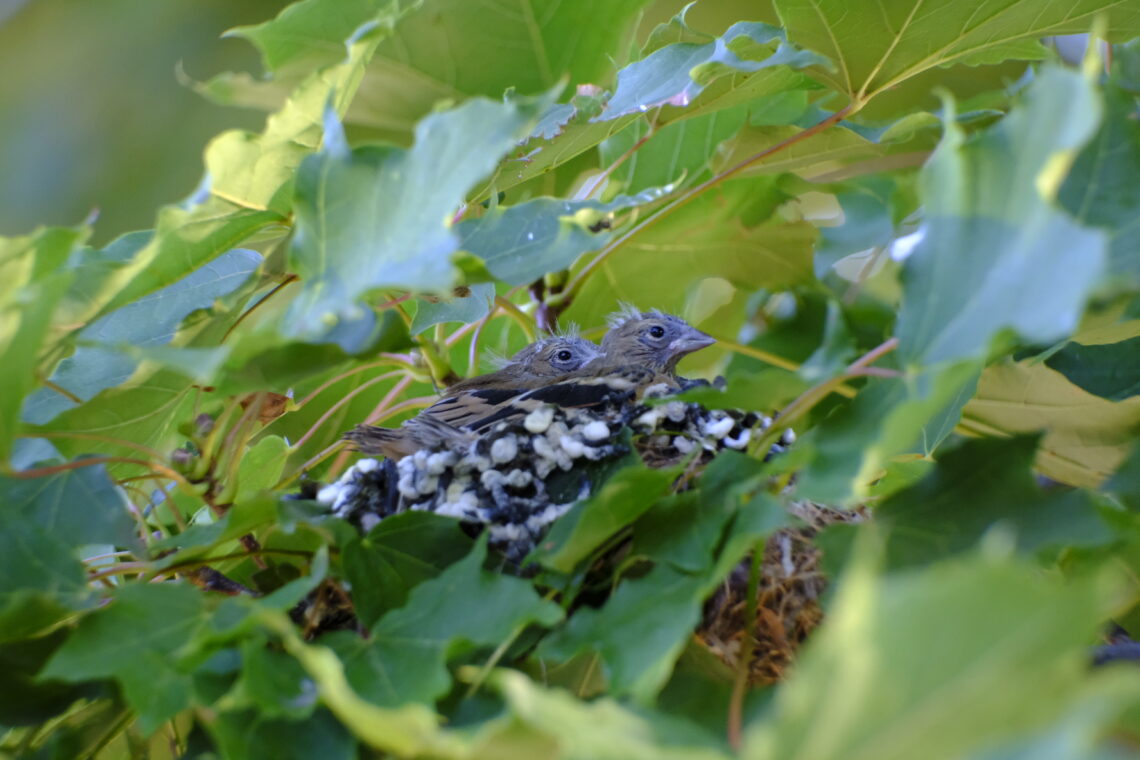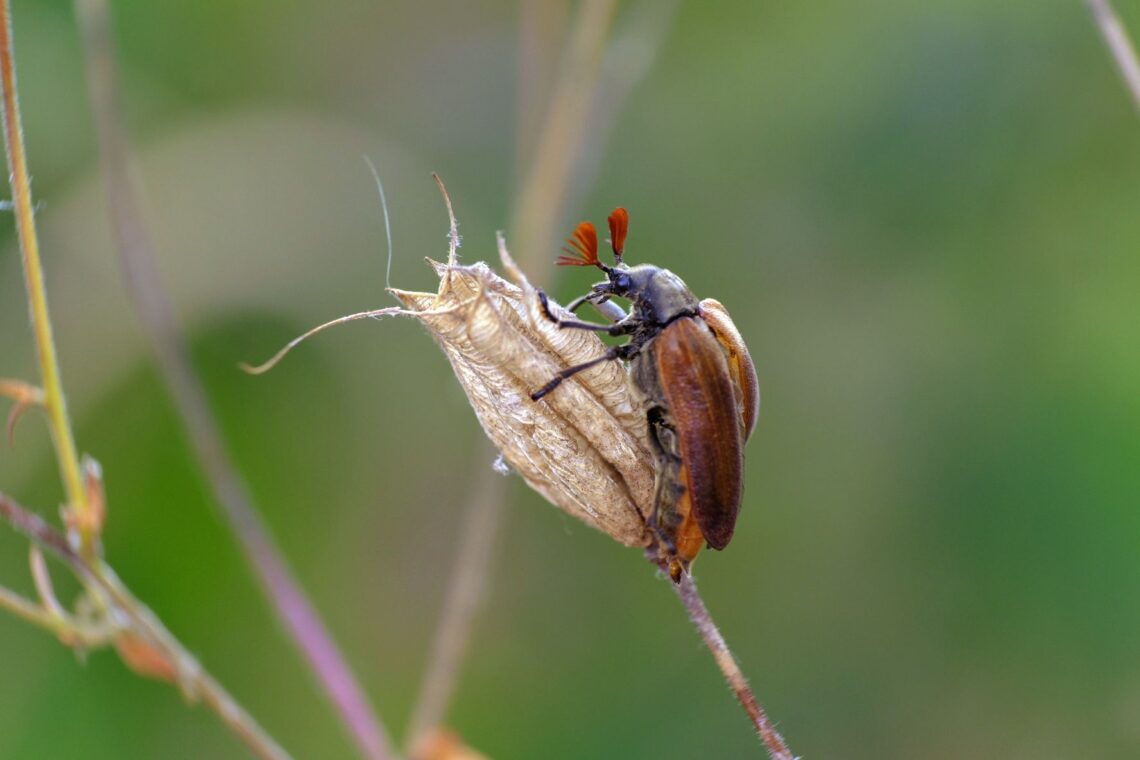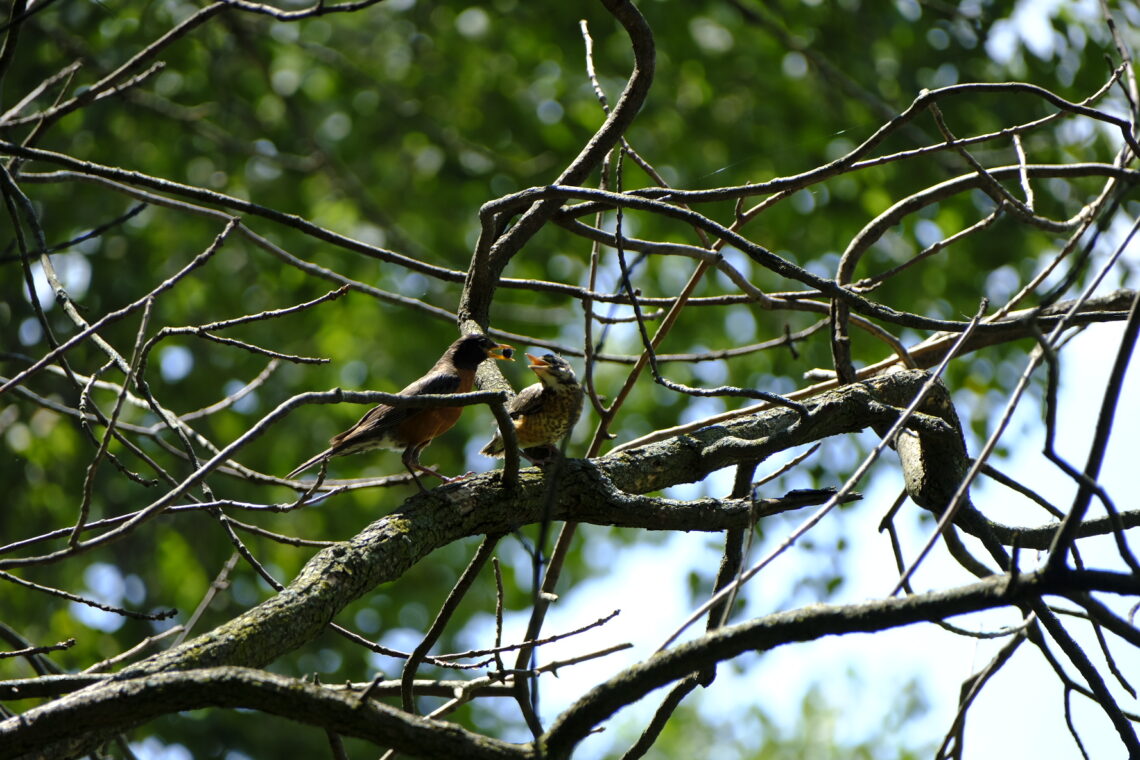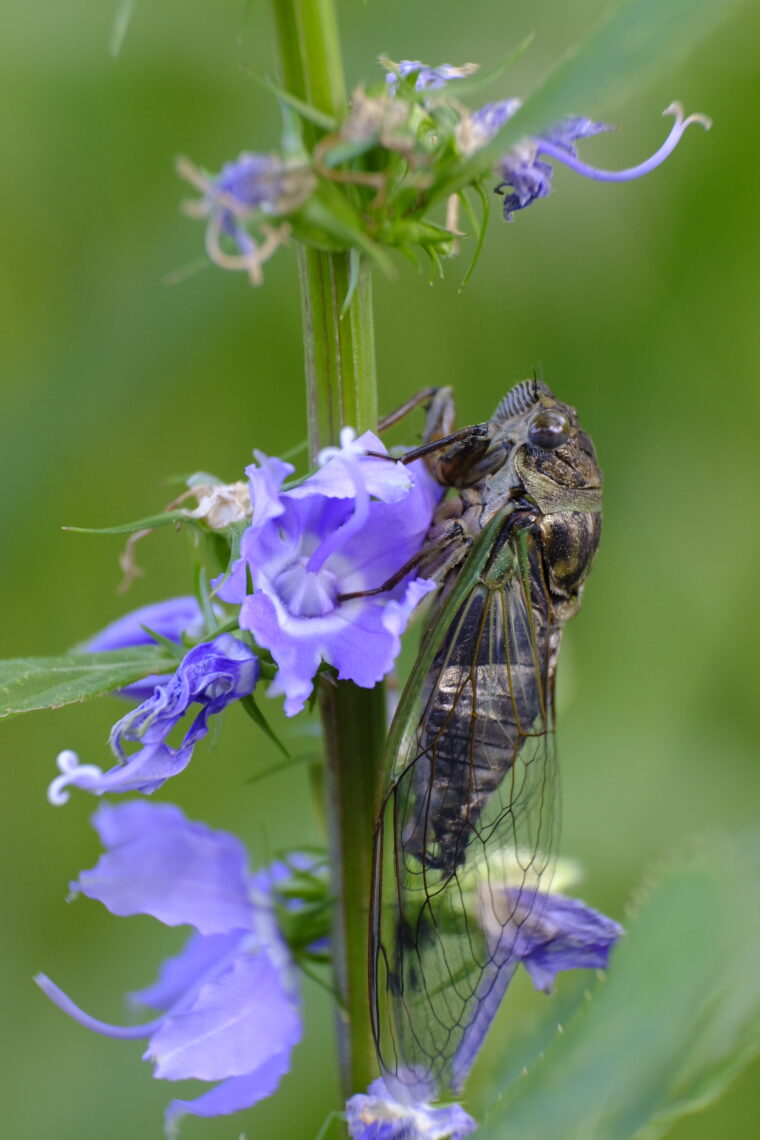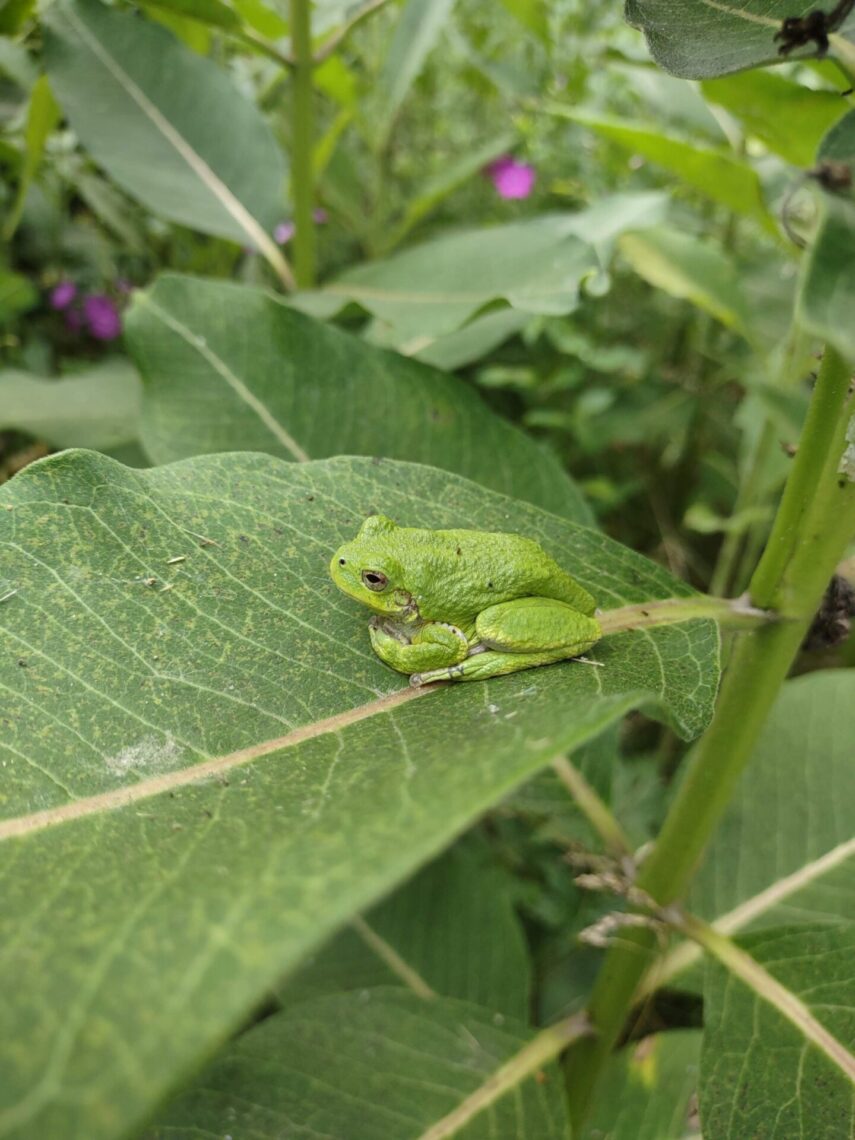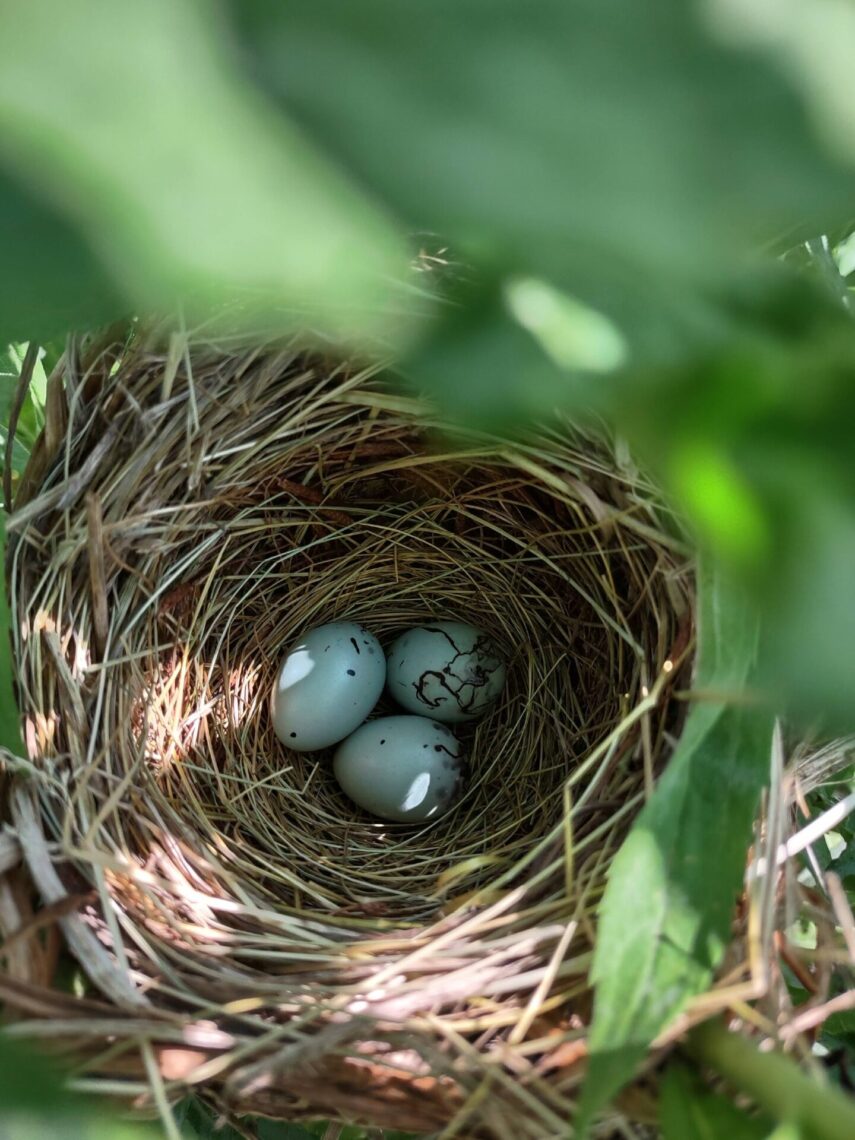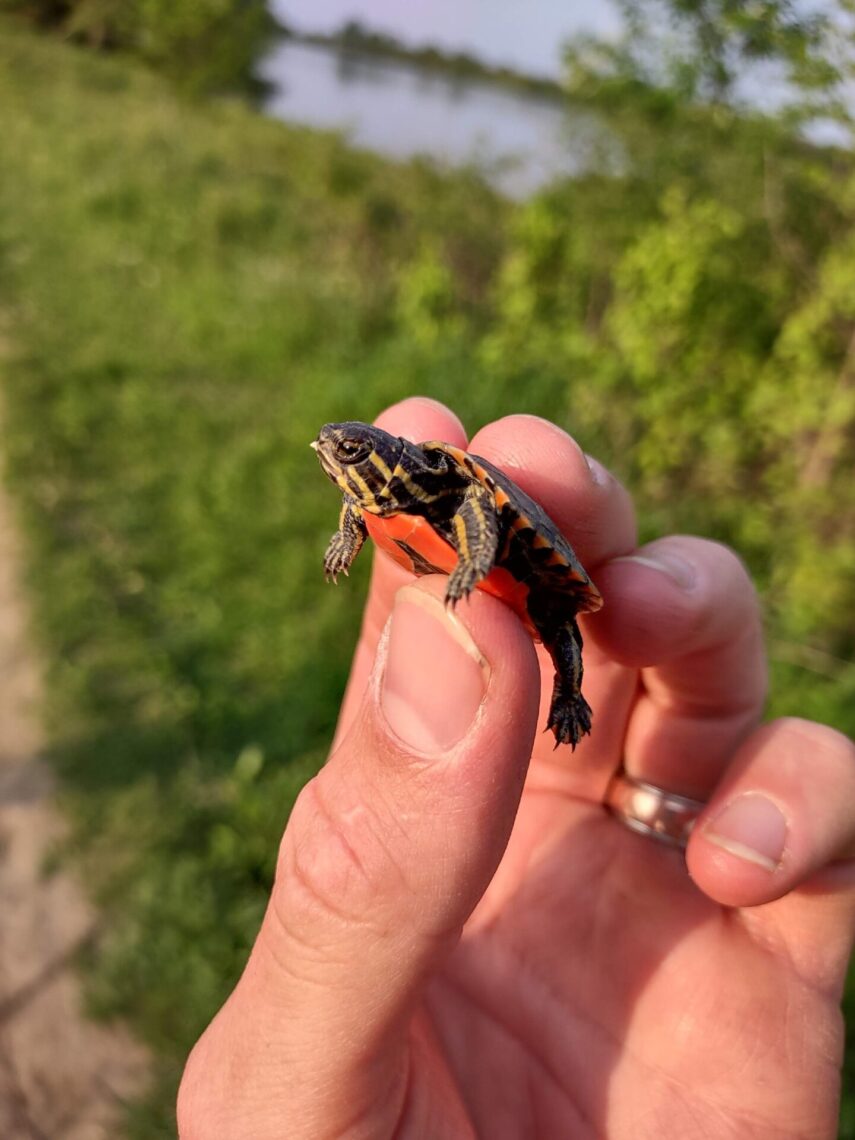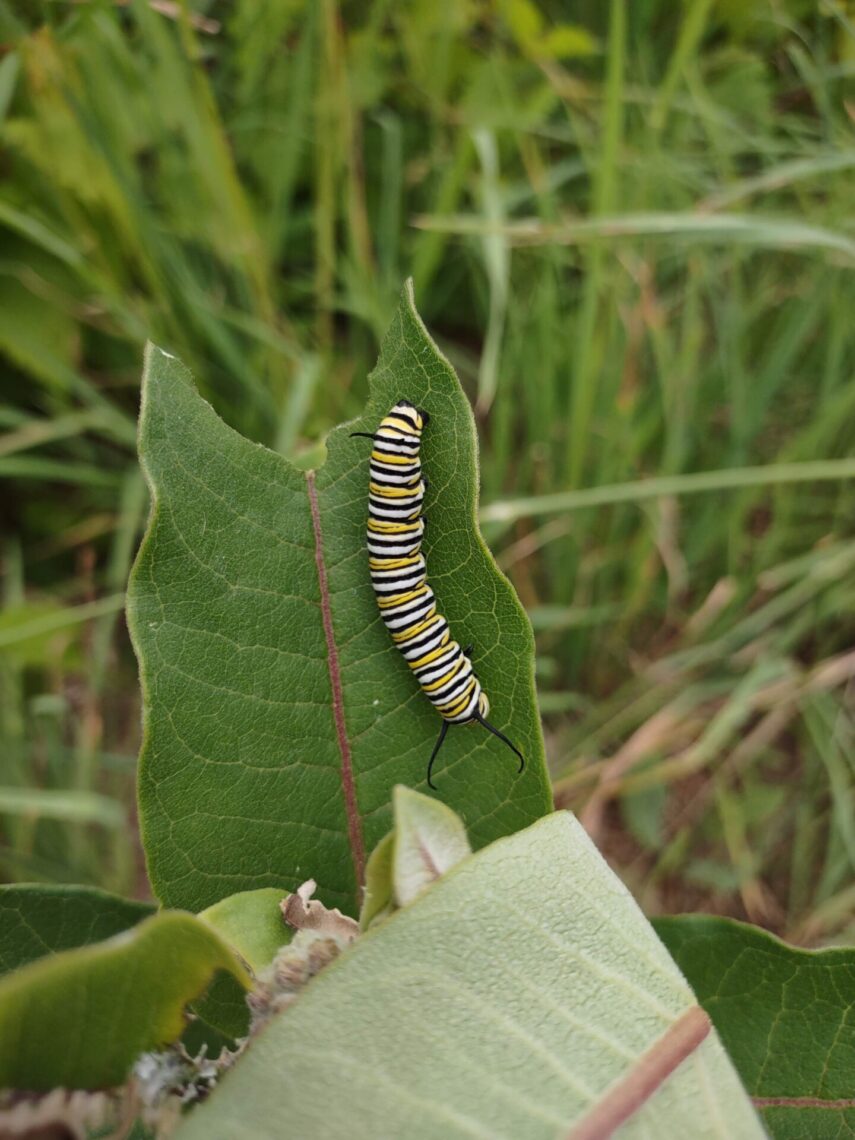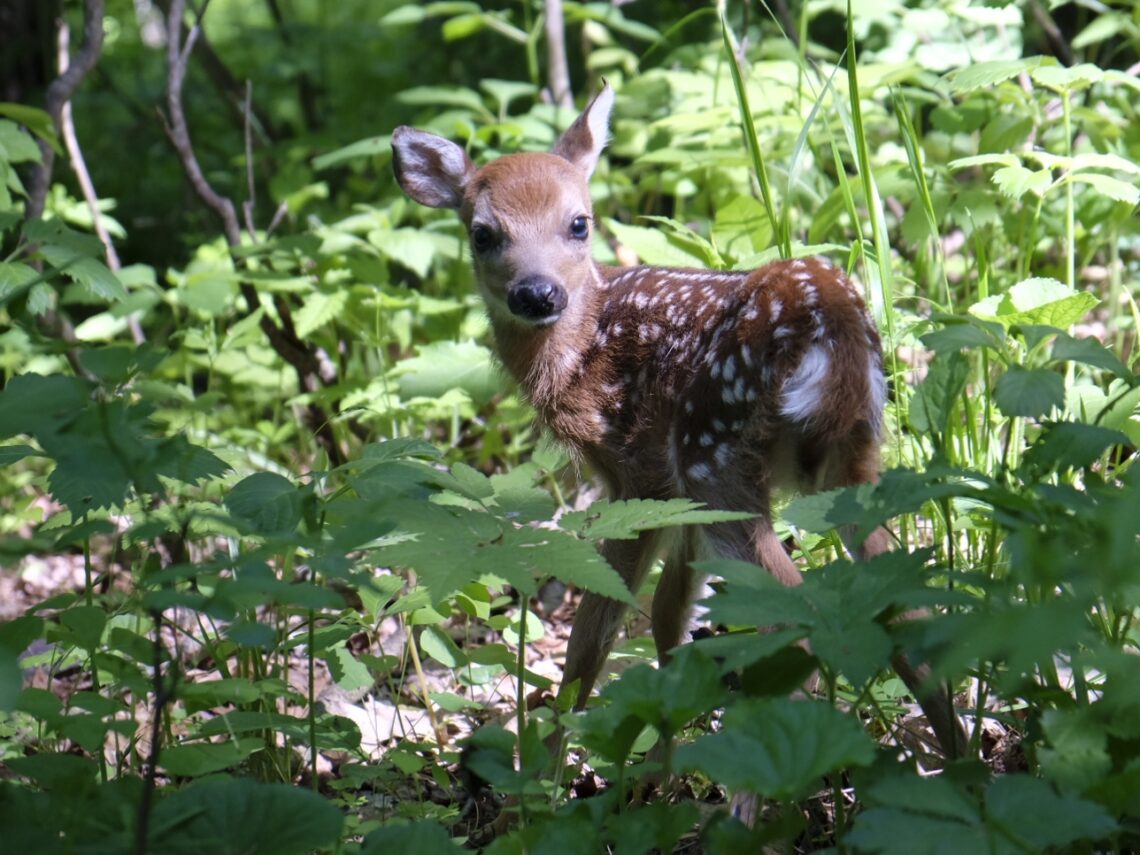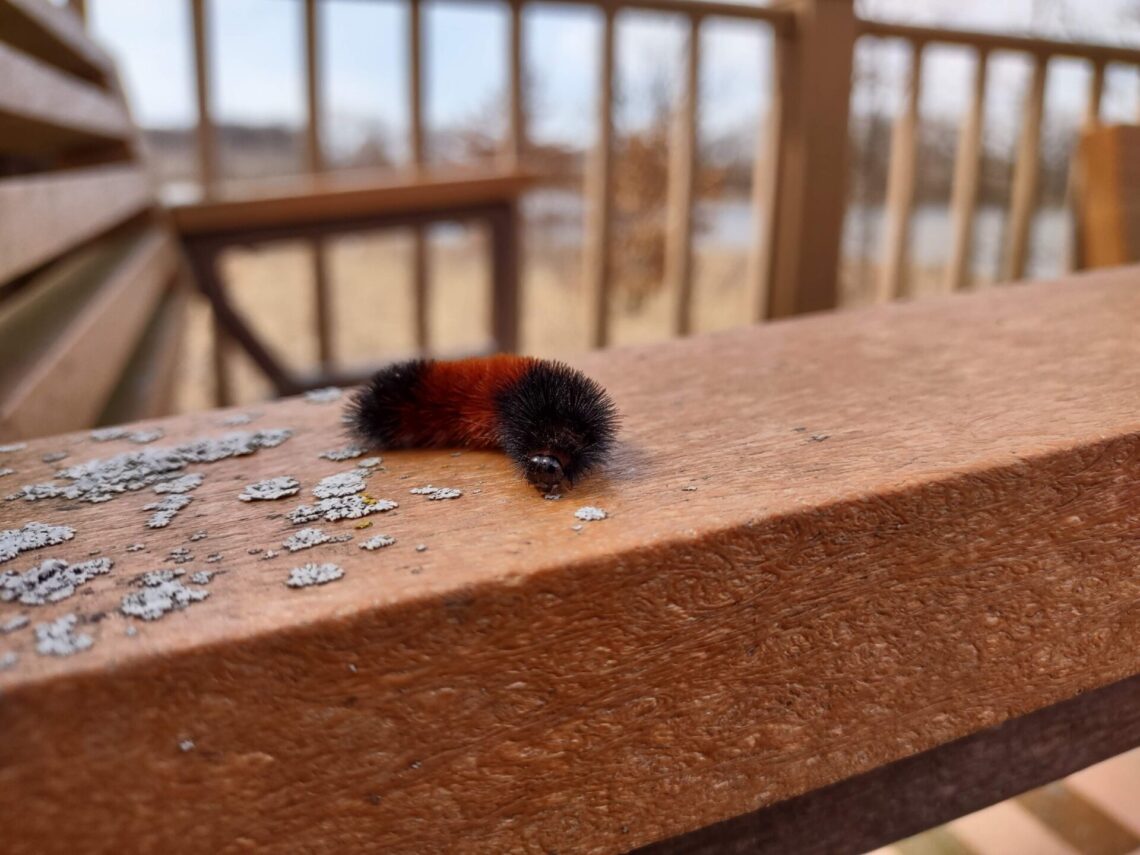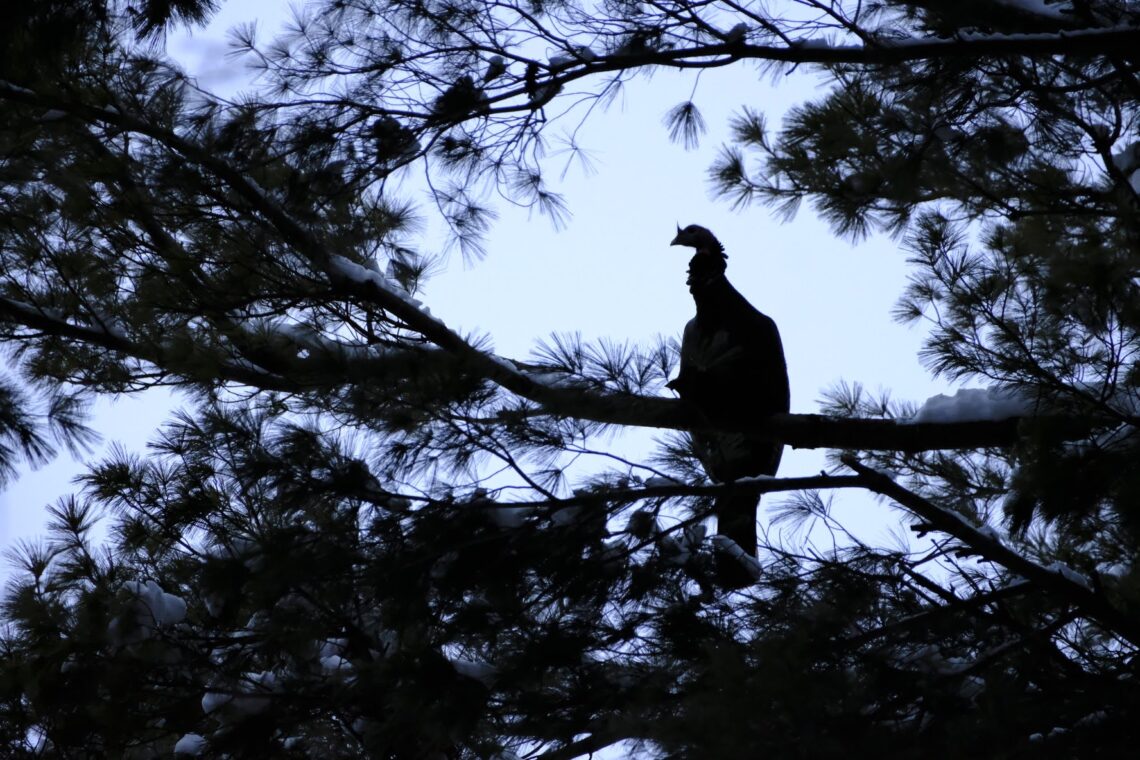Now that winter is (hopefully) in the rearview mirror, it’s time to start getting excited about spring and all that it brings! The most recent snowfall is melting away, the birds are singing, plants have started emerging from the soil, and somehow that stinkbug crawling along my ceiling managed to survive the winter. Like seriously, I’m not the only one who has been evicting occasional stinkbugs all winter, right?
Anyway, as we prepare for the warmer days ahead, let’s take a minute to see what nature’s been up to.
Despite the several inches of snow we just got earlier this week, pasque flowers continue to bloom, and have been out for almost a month! These fuzzy little spring flowers are tough and can handle the wild weather that we’ve been having lately. They can tolerate snow, high winds, and frosty nights due to their ability to insulate themselves so well.
Did you know that while pasque flowers look very similar to the crocuses you find blooming around your neighborhood this time of year, they are actually an anemone which is in the buttercup family?
If you’ve been near a wetland recently, you may have noticed that all of the fuzzy little buds on willow branches have opened up and are bursting with color. Willows are some of the earliest woody plants to begin leafing out and flowering. They are often scattered amongst red-osier dogwood which competes for the showiest plant color this time of year.
The bugling of cranes overhead is probably the most significant sign of spring for me. To think that many of them have been enjoying sunny Florida all winter, yet still make the long journey back home to Wisconsin, makes me smile. They usually start making their way back around March and in April and May they’ll start nesting. These prehistoric-looking birds mate for life (sometimes up to 20+ years) which is why you will often see them walking in pairs.
Lastly, it’s prescribed fire season! While it can look harmful to nature, it does quite the opposite. Many species of plants and animals evolved alongside fire and certain ecosystems need it to survive. As critters begin emerging from the ground and migrating from the south, we want to ensure they have healthy habitat to live in which is why we use fire safely as a management tool.
Just a reminder that if you see a crew burning at a public area near you, please give them plenty of space and keep all pets leashed. Their top priority is safety, and you can help with that.
I hope you enjoyed this month’s nature update and I’ll see you next time!
Cheers,
What a rollercoaster of weather we’ve been having lately! Some days I walk outside and feel like I’ve been teleported to early summer and the very next day I’ve travelled back to February. Just the other day we had close to a 60F drop in temperature overnight! I’d hate to be a weather-predicting groundhog right about now because even with years of experience, these predictions seem to be getting more and more difficult.
As we scramble to adjust our outdoor attire just about every other day, let’s take a minute to see what nature has been up to!
With all of the warm weather we’ve been having, it probably shouldn’t come as a surprise that our lakes are already opening up and the ice is quickly melting away. In areas where we would normally see crowds of people ice fishing, we now see ducks and geese floating on the water.
Out of curiosity, I checked out UW’s Climatology Office website to see how long Lake Mendota was frozen over this year compared to last year. Apparently, Lake Mendota only had 44 days of ice cover this year compared to the 98 days of ice cover last winter!
Recently, I went out on a hike with my family to soak up the sun and explore nature. The trail led us under a large willow tree overlooking a marsh and near the trunk of the tree we discovered an owl pellet! We don’t find them often, but when we do it’s very exciting because my 6-year-old loves taking them apart to look for bones (I do too). If you look closely at the pellet pictured above, you can see the yellowish-orange front teeth that belong to a rodent skull!
Owls usually start nesting in late January to early February which is considerably earlier than most birds. About a month later, their eggs will begin to hatch which should be about this time!
While out with my monthly outdoor volunteers, we discovered another little brown blob (pictured above). This was very clearly not an owl pellet. It felt sort of like hardened foam and it was attached to a stick. At first, I thought it could be a type of fungus but then discovered that it was actually a praying mantis egg case!
Praying mantises create this protective casing for their eggs in the summer. It insulates the eggs all winter and, in the spring, the nymphs emerge by the dozens. *Note that if you find an egg casing that looks similar to this one, it likely belongs to the invasive Chinese mantis. The native mantis creates more elongated egg cases.
Lastly, I’ll leave you with these adorable muskrats that were taking a nap in the sun. With most of the ice melted you’ll probably notice more muskrats swimming around lake edges and basking in the sun. Fun fact: I learned just a couple of weeks ago that muskrats can hold their breath for up to 15-20 minutes, allowing them to swim great distances under the ice!
I hope you enjoyed this month’s nature update and I’ll see you next time!
Cheers,
Happy February! I don’t know about you, but if someone were to ask me what my favorite month is or even my top 5 favorite months, February usually isn’t in the running. When I think of February, the color gray immediately comes to mind.
I need to kick this habit though because February is a wonderful time of year! The days are finally getting longer, buds on trees are starting to form, and cardinals are starting to sing in the early morning! While we watch the snow melt from this unseasonably warm week, let’s get outside and see what else February has to offer.
Lately, I’ve been noticing a lot of rodent tracks in the snow which always brings a smile to my face because of how sneaky they generally are. While I have seen mice and voles run right by me while out on hikes, it’s not very common. As sneaky as they are, covering their tracks is impossible so it’s nice to see where they choose to hike when no one else is around.
While looking at the tracks found at Westport Prairie, I heard what sounded like a Red-tailed Hawk screeching overhead and when I looked up, it was actually a Blue Jay! Did you know that Blue Jay’s often mimic the screech of a Red-tailed Hawk?
Being a mouse means you really need to plan your hikes, because right about where the mouse tracks ended, the coyote tracks (pictured above) started… One easy way to tell if tracks belong to a domestic dog versus a fox or coyote is to look at the path of the tracks. Dogs rarely walk in a straight line while foxes and coyotes are much more efficient with their consumption of energy.
These tracks were fairly large and spaced pretty far from one another which helps with my coyote identification. Fox tracks are generally a little smaller and spaced closer together.
As I continued my hike, I ventured a little off the trail to identify some prairie plant seed heads (as one does). As I got closer, I saw a cottontail rabbit burst from the grass and it raced away from me. It was startling but also confusing because the grass here was very short and this was a fairly large rabbit. It didn’t seem possible for something that large to be completely obscured less than 5 feet from me.
I carefully walked around the area to see where it came from. I thought maybe there was a hole in the ground that it was hiding in. It crossed my mind that maybe it was just in plain sight but not moving so it camouflaged in with its surroundings and I just didn’t see it.
As I crouched down to get a better view, I found this perfect little nest (pictured above) tucked away under the grass. It looked well-insulated and very cozy! There’s no way in a million years that I would have ever found this nest if I hadn’t accidentally flushed the rabbit. In that moment, I looked around and wondered about all of nature’s other secrets that are almost literally under our feet, and we just don’t notice.
Well, I hope you enjoyed my virtual tour of nature as it’s happening. Spring is not all that far away so try to get out and enjoy all that February has to offer!
See you next month!
Happy almost New Year! I’m not sure about you, but it seems like this past year flew right on by. In my mind, I’m still picking tomatoes from my garden but when I look outside, I see snow. Before you know it, spring will be here so let’s get outside and try to enjoy every minute of it!
I know that I enjoyed just about every minute of the past week because I was fortunate enough to get outside and enjoy nature in Florida. I visited some family who recently moved there, so sit back and let’s take a quick virtual tour of what’s happening outside right now (a little further south)!
One of my favorite critters to watch on my trip were these brown pelicans. They reminded me of home in Wisconsin where we have American white pelicans. Just hop over to Patrick Marsh in the summer and you’ll see hundreds of them loafing about and hunting for fish.
Brown pelicans on the other hand are found in places with saltier water. They’re smaller than white pelicans, are much darker, and don’t have that bright orange beak. They also fish a little differently than our white pelicans in that they dive into the water from the air to catch fish. Seeing such large birds dive into the water from great heights was quite a spectacle!
I don’t even have to ask what my 6-year-old’s favorite part of the trip was. Seeing these small brown anole lizards around every corner and attempting to catch them was definitely his highlight. Did you know that Wisconsin is home to four different lizard species? There’s a really good chance you’ve never seen any of them though. However, these brown anoles were everywhere we went and that’s not surprising considering they are an introduced and very invasive species.
We have our own invasive species in Wisconsin (many of which I work to control), so it was interesting to learn about invasive species in Florida. These brown anoles displace the green anoles that are native to the state. The brown anoles are more aggressive, are better at adapting to the environment, and won’t be leaving anytime soon.
The highlight for me was getting to see migrating manatees in the wild! The whole experience was incredibly bizarre because we simply have nothing like this in Wisconsin. These slow-moving sea cows were such graceful swimmers and were much larger than I had thought (~10′ long)!
When I think of migration, my mind goes straight to birds even though there are tons of different species of wildlife that migrate. One of those species is the manatee which, like many people, travel to Florida in the winter months. Manatees are not able to tolerate water temperatures below 68F for long periods of time, so when it gets cold, they swim to natural springs (like the one pictured above) where the water stays at around 72F year-round.
It would be hard to talk about Florida without mentioning the alligators. Wisconsin has quite a few different species of reptiles, but none as large as the American alligator. We kept a ‘gator tally’ for the whole trip and ended with 18 of them! The alligator pictured above was a juvenile and only measured to about 2′ long. The mom wasn’t too far away so I snapped a few quick pictures from a safe distance and we got out of there ASAP!
Well, I hope you enjoyed my virtual tour of nature as it’s happening.
P.S. Give a year-end gift to Groundswell today! Thank you for helping to protect special places and connect others with nature.
See you next year!
The holidays are just around the corner and that alone is a good enough reason to start planning your next outdoor adventure! Whether it’s a stroll through your neighborhood, a hike at your local park, or a road trip to a faraway land, it’s time to get something in the books!
Sometimes when I head out on a hike, my goal is to see wildlife. Maybe there’s a species of migrating warbler in the area that I’m in search of, or maybe I’m looking for a monarch caterpillar feeding on some milkweed. While watching critters in action is fun, one of my favorite activities when outside is to look for signs of wildlife. Just about every creature leaves behind something that tells you it existed at one point even if you didn’t see it. It’s fun to put these puzzle pieces together and create a picture of what was happening while you were off doing human things.
For example, the thousands of yellow-bellied sapsucker holes I stumbled upon while out in the woods last week (pictured above). Just about every surface of this tree was tattooed by these native woodpeckers. I didn’t witness a single hole being drilled but I can picture the countless hours it took to meticulously create these holes so that they fill with sticky sap which traps insects for the woodpeckers to eat.
I always get a kick out of seeing cracked open nuts that are placed in very specific locations. Is it possible that the nutshell pictured above fell off of a tree directly over the rock and cracked open on impact? I suppose it’s possible. What’s more likely is that a hungry squirrel carried the nut over to the rock for a quick picnic. I’ve noticed over the years that like humans, many species of wildlife enjoy eating at cozy or scenic spots. Nothing beats eating lunch on a comfy seat with a nice view!
While out on a hike, my son noticed this fuzzy little casing carefully built in a bark crevice. Neither of us had seen one of these before so we got up close and examined it. It looked like an insect created it, but we didn’t know what kind. After a quick internet search, we discovered that it unfortunately was an egg mass created by a European spongy moth (formerly named the gypsy moth). These insects can cause some serious damage to our forests by defoliating trees very quickly. If you spot one of these in the wild, the Wisconsin DNR has tips for removing them so they don’t spread.
While finding animal tracks and sign is fun, it’s hard to beat observing an actual critter out in nature. The unseasonably warm weather we’ve been having this fall has encouraged snakes, like this garter snake pictured above, to get out and sunbathe on graveled paths that are warmed by the sun. This one was enjoying the rays so much that it didn’t bother moving until we almost stepped on it!
Well, I hope you enjoyed my virtual tour and I hope you enjoy the holidays; however you celebrate them!
P.S. You can help protect special places and connect others with nature. Give a year-end gift to Groundswell today!
See you next month!
The beautiful leaves of fall are upon us (sometimes literally)! It’s a wonderful time of year that seems to be slipping away very quickly. In fact, the last couple of frosty nights mixed with high winds and rain have caused these leaves of just about every color to fall to the ground at an alarming rate. So fast, that it’s impossible to tell that I raked them all out of my yard just the other day. As we inch our way into winter, let’s get outside and see what’s happening in nature right now!
Some hardy insects like the Autumn meadowhawk (pictured above) are still out and about. While visiting Horicon Marsh with my family the other day, we noticed a few of these dragonflies actively hunting smaller insects. It was really cool watching them land on the boardwalk and then rotate their head side to side as they watched insects fly by. I’ve noticed that with the colder weather, insect activity has really slowed down, but it was nice to know that there are some species that stick around for a while longer.
While out at Horicon, we were expecting to see a ton of waterfowl since migration is beginning but I think we were just a bit early. While we did see several different duck species, what was really neat was seeing a few handfuls of trumpeter swans floating about. Their beautiful white feathers against the various golds and browns of fall were breathtaking. It was a great reminder that Wisconsin is home to some pretty spectacular creatures.
New England aster is one of my favorite fall flowers and while most have already flowered and begun going to seed, there are a few still hanging on if you’re lucky enough to find them. While admiring them, don’t get too close because you may come face to face with an ambush bug! If you look closely at the photo above, you’ll see a little yellow insect that’s perfectly camouflaged with the yellow part of the flower. It’s waiting for a pollinator to visit so it can have a nice meal!
Lastly, I’ll leave you with these fancy turkeys I stumbled upon while out on a hike. Turkey strutting is more of a spring activity during their breeding season so it was a real treat getting to watch them do this just the other day. They kept hopping up onto a log to display and then would hop off (rinse and repeat).
Well, I hope you enjoyed my virtual tour and I’ll see you next time!
*Did you miss an article? Check out my collection of past monthly Nature Now articles on our website HERE. Just click the dropdown menu ‘Any Type of News’ and change to ‘Nature Now’ to filter the articles.
It’s aster and goldenrod season! This time of year is one of my favorites as the natural landscape lights up with hues of yellow and purple. Head out to a local prairie near you and you’ll see firsthand just how complimentary these colors are. They make me think of apple picking, the beginning of crunchy leaves on the sidewalk, and of course the end of summer. In fact, this Saturday marks the autumnal equinox, so put on a flannel, grab that spiced warm drink you’ve been thinking about, and let’s get outside!
For those not quite ready for fall (I’m one of them, so no pumpkin spice latte for me), here’s a little reminder that some bird species are still nesting! Most think of spring as the time for baby birds, but some species like the American goldfinch don’t begin nesting until mid-late summer.
While it may seem like they are procrastinating just a tad, goldfinches have actually adapted quite well to late-season nesting. During this time, milkweed and thistle fluff are plentiful and can be found lining their nests. By the time goldfinch fledglings are ready to leave the nest, most plants have already gone to seed which just so happens to be the sole diet of goldfinches. Convenient! See the photo below of the active goldfinch nest that is in the maple in my front yard RIGHT NOW!
This time of year, insects are also still very active. Go take a look at those goldenrods and asters currently in bloom and you’ll likely find a sleepy bee absolutely covered in pollen. Last week while out with my monthly outdoor volunteers, we came across a very large yellow garden spider (pictured below) trying to catch insects in its web. The pattern on the abdomen of this particular spider made it look like it had several large eyeballs staring back at me. Creepy!
Lastly, I’ll leave you with this picture of a cedar beetle perched on a wild columbine seed pod. My son was the one who discovered this odd-looking insect the other day and said that it looked like antlers on its head. I had to agree with him! Having never seen one before, I immediately looked up what it was. Turns out, it’s a cedar beetle which is confusing because it has no relationship with cedars.
What they’re known for is the parasitic relationship they have with cicadas. In fact, they’re also called ‘parasitic cicada beetles’. Apparently, they lay their eggs on trees and once the larvae hatch, they crawl down the tree and burrow into the ground in search of cicada nymphs for a meal. If that’s not creepy, then I’m not sure what is!
Well, I hope you enjoyed my virtual tour and I’ll see you next time!
*Did you miss an article? Check out my collection of past monthly Nature Now articles on our website HERE. Just click the dropdown menu ‘Any Type of News’ and change to ‘Nature Now’ to filter the articles.
We’re officially halfway through summer and as each new day passes, the amount of sunlight we have is gradually shrinking. While I intentionally try not to think about a 5 pm sunset in the winter, it is a good reminder to get outside, soak up that sun, and enjoy these wonderfully long days while they still last. In case you need some extra motivation to get outside, follow me on this month’s virtual nature tour to see what’s happening out there right now!
Take a quick trip outside and you’ll notice an abundance of insects. Everywhere you look, they seem to be buzzing, flapping, or crawling about. This little mantis (pictured above) was spotted at an outdoor volunteer event at Westport Prairie.
They are extremely efficient hunters that not only have great camouflage; they are also able to rotate their heads 180 degrees to help them spot and catch prey. While being an efficient hunter is a great skill to have, unfortunately, they are indiscriminate feeders that will eat native insects, and most mantises that you find here in Wisconsin are actually invasive. That being said, they are incredible insects and so darn cool to look at.
While out on a hike with my wife Carolyn, we noticed a fledgling robin that was begging for food up in a tree. This mostly consisted of a lot of feather shaking with its mouth wide open, similar to what they would do inside of the nest. Sure enough, not even a few seconds later the momma robin flew in and provided a plump berry as a nice mid-morning snack. We watched her do this about 4-5 times before they both flew away. Come this time next year, if the fledgling is able to survive, it will be feeding a baby of its own (so hopefully it’s taking notes)!
This Dog-day cicada was actually spotted in my front yard earlier this week. My son and I quickly ran inside to grab our cameras since I guess that’s a thing that we do when we see cool bugs. We both started snapping photos and comparing to see what sort of good shots we got. While reviewing the photos on our cameras, I heard a loud scream that went on for at least 4 seconds. I look over towards the scream and see that there’s another cicada that had crawled up my son’s leg and (very) slowly approached his knee.
He was so invested in reviewing his photos that he hadn’t noticed this rather large insect crawling up his leg. I was laughing so hard I had tears in my eyes (while removing the insect for him). He laughed about it afterwards and although only slightly traumatized, I’m sure he’ll keep that memory with him for a long time.
Finally, I’ll leave you with this extremely cozy gray treefrog that I spotted at a friend’s house this week. The milkweed that it was perched on really helped the frog camouflage into its surroundings. In fact, I was actually on the hunt for monarch caterpillars at the time, and I definitely would have passed right by him if I wasn’t actively scanning the milkweed. As if we didn’t need another reason to plant more milkweed!
Well, I hope you enjoyed my virtual tour and I’ll see you next time!
*Did you miss an article? Check out my collection of past monthly Nature Now articles on our website HERE. Just click the dropdown menu ‘Any Type of News’ and change to ‘Nature Now’ to filter the articles.
Happy summer! I’m not quite sure how spring has already come and gone, but here we are at the beginning of summer and there’s quite a bit going on outside right now. In fact, there’s more going on outside than usual if you include the wildfire smoke that’s kept us indoors this week. As much as I encourage people to get outside and enjoy nature, I hope you’re paying attention to the air quality reports and staying inside when necessary. While you’re inside, let’s take a virtual tour to see what’s going on out there despite the smoke!
If you were to head outside right now, you may discover that birds are nesting. While some birds are discreet nesters, others like red-winged blackbirds are more than happy to tell you all about how their nesting is going. While it’s never happened to me, I’ve heard stories of bicyclists and walkers getting dive-bombed by nesting red-winged blackbirds and chased down the street. They can be pretty territorial when it comes to their nests, so be sure to give them some space unless you want knocking off your hat.
While out at Patrick Marsh, we discovered a baby painted turtle on the side of the trail. I picked it up and moved it further off of the trail so that it wouldn’t get stepped on, but had to take a quick photo before releasing it. They’re one of my favorite types of turtle because of how colorful and plentiful they are. I’ve stumbled across many baby turtles in the past and I always forget just how small they are when they’ve just hatched.
Turtles love nesting on trails and in gravel parking lots because the dirt/sand is the ideal substrate for them to dig in. So if you see a little golf-ball sized hole (sometimes much bigger) on a trail, there’s a good chance a turtle deposited some eggs in there.
Now is the time to start checking the milkweed in your yard for monarchs! Simply look for leaves that have been chewed up and there’s a good chance that there is a monarch caterpillar not far away. I shouldn’t have to tell you this, but if you find one, make sure you don’t eat it (I know, it’s tough). Because monarch caterpillars feed exclusively on milkweed which contains a toxic sap inside, the caterpillars themselves are actually toxic. In addition to being toxic, they’re also brightly colored with lots of stripes. This combination tells predators that they should stay away unless they want to get sick. Mushrooms are similar in that the extra colorful and bright red ones are usually the ones to stay away from.
Lastly, I’ll leave you with a photo of this white-tailed deer that I spotted while out with my family on a hike. Its knobby knees and wobbly legs made it look like it was straight out of a Disney movie. It was pretty darn adorable and I was extremely pleased with how cooperative it was for a photograph, which is not usually the case with wildlife photography.
Have you ever wondered why fawns have little white spots all over them? It’s to help camouflage them with their surroundings. When a predator is nearby, fawns (usually) have an instinct to lay down and stay still. The white spots on their back break up their silhouette and help mimic the dappled sunlight that would hit the forest floor. Well, I hope you enjoyed my virtual tour and I’ll see you next time!
*Did you miss an article? Check out my collection of past monthly Nature Now articles on our website HERE. Just click the dropdown menu ‘Any Type of News’ and change to ‘Nature Now’ to filter the articles.
Spring is finally here! It didn’t seem like it would ever actually happen, but here we are. The birds are singing, the chorus frogs are chirping, and plants are starting to emerge from the soil. It’s a great time of year for many reasons, but I especially like it because it seems so much easier to notice the little changes in nature. While you’re here, let’s take a quick virtual tour of some of those changes that are happening right now!
Woolly bears are back! Well, I guess they never really went anywhere to begin with, but now they’re active. Did you know that wooly bear caterpillars produce a chemical in their body similar to anti-freeze which allows them to almost freeze completely solid over the winter? Once the temperatures begin to warm up, these fuzzy little caterpillars thaw out and become active (and very hungry). After a few days of eating, they build a cocoon and eventually emerge as an Isabella tiger moth!
While out on a hike with my family, we went to a local green space in search of woodcock. This time of year is when they typically do their sky dance and can be heard ‘peenting‘ at dusk. We were lucky enough to both hear and see this wonderful springtime display from such an odd bird.
As we continued our hike, we headed towards a group of pines where we have seen roosting turkeys in the past. Sure enough, after briefly scanning the tops of the trees we saw four of them sitting motionless on some limbs. Even though I have known for many years that turkeys sleep in trees, it’s still one of the strangest sights to see and it always brings me joy.
If you have been out to some wetter areas lately, you may have noticed that the willows are looking quite a bit fluffier than they did a month or two ago. From a distance, the stems all look as if they’ve been lightly touched by snow, but upon closer inspection, you’ll see that the buds are actually preparing to flower. Since these willows are some of the first to bloom, the light-colored fuzz helps protect the flower buds from the cool spring air.
On this particular branch, I found what looked like a pinecone. There were actually a bunch of these all over and it turns out that these pinecone-looking structures are actually insect galls. Tiny insects called gall midges lay their eggs in the stems of willows. As a defense mechanism, the willow produces these ‘cones’ which ends up providing shelter for the insect. In the summer, these insects will emerge from the galls.
Speaking of fuzzy plants, pasque flowers are beginning to bloom! This has got to be one of my favorite flowers of all time. Similar to the pussy willow, pasque flowers are very early bloomers, as well as fuzzy. This fuzz acts as insulation against the cold weather and is very effective. In no time at all these flowers will be outstretched and soaking up the spring sunlight.
I hope you enjoyed my virtual nature tour and happy almost spring!
*Did you miss an article? Check out my collection of past monthly Nature Now articles on our website HERE. Just click the dropdown menu ‘Any Type of News’ and change to ‘Nature Now’ to filter the articles.


